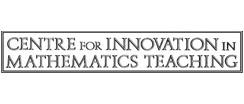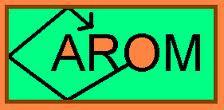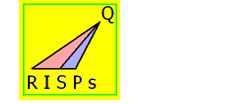Sequences and Fractals
A collection of resources looking at fractals and some useful resources exploring the nature of sequences.
- ALL
- Teacher guidance
- Textbook
- Presentation
- Group work
- Activity sheet
- External link
Teacher guidance
Fractals
A study plus resources exploring fractals suitable for 11-16 year olds. The theme of the activity is sequences with fractions. Using the topic of fractals, students explore the patterns and sequences generated from the perimeters and areas of the von Koch Snowflake
Textbook
Searching for Pattern
An MEP resource. The text book covers; pictorial logic; finding patterns from shapes, number sequences; triangular numbers, square numbers,cubic numbers and Fibonacci sequence. Using matchsticks to make number sequences and exploring Pascal's triangle.
The Activity sheet contains good classroom activities.
Presentation
The Mandelbrot Set
An advanced A level resource from Carom Mathematics. This presentation explores the Mandelbrot Set, a topic from Chaos Theory, which involves complex numbers and the Argand diagram.
Group work
Analysing Sequences N13
In this resource, from the DfES Standards Unit, students learn to define a sequence using the general form of the nth term, define a sequence inductively, recognise and define an arithmetic and a geometric progression and to reflect on and discuss these processes. Students should have some understanding of what a number sequence is. (AS and A2 level)
Activity sheet
Sequences
Resources for teacher use suggesting methods of using higher order questionning on the topic of sequences.
This sessions covers:
• Sequences - using higher order questions
• Introducing arithmetic progressions - using rich collaborative tasks
Sequences and Series
An A level activity (RISP) about sequences. The first activity in this set, provided by RISPs, draws on defining a sequence, the nth term and identifying convergent and divergent increasing, decreasing, oscillating and periodic sequences. Second risp activity tackles sequences, risp 14 is another activity that does the same. The former is a superior consolidator, while this one tends to work better as a starter on the subject. Risp 20 introduces arithmetic series/sequences and sequences generally.
External link
Fibonacci Numbers
A video showing how a Year 7 class investigates Fibonacci numbers and sequences.The class works through a series of envelopes, each containing a prepared activity about Fibonacci numbers and sequences. Each group moves from one activity to the next at their own pace and the pupils do most of the work.
Hidden Patterns in Durham Cathedral.
Inspired by the patterns of the holes in the arches at Durham Cathedral, Steve Humble explores some interesting numbers patters. Starting with triangular numbers, Steve moves on to look at a nice number pattern using squares and cubes






